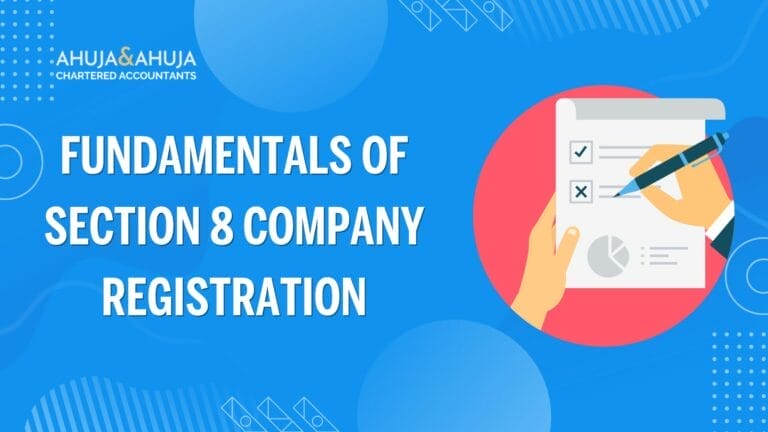Conversion of Private Limited Company to Public Limited: A Detailed Guide
In the dynamic world of business, growth and expansion are often accompanied by significant structural changes. One such pivotal change is the conversion of a Private Limited Company into a Public Limited Company.
This transformation can unlock a plethora of opportunities, including enhanced access to capital markets, increased visibility and stature, and a broader base of potential investors.
Private Limited Companies are popular because of their simplicity and flexibility in operation and management.
However, when scaling up, businesses often need to mobilize more financial resources and enter larger markets, making the Public Limited Company structure more suitable.
Legal Foundation
The transformation from a private to a public company is governed by the Companies Act, 2013, specifically under sections such as Section 12, Section 14, and Section 18.
These sections outline the legal requisites and the process involved in the conversion. The Companies Act, 2013, with its well-defined procedures, ensures that the conversion process is smooth and straightforward, maintaining statutory compliance throughout the transformation.
Interested companies can also examine the detailed company registration procedures in India which provide a solid understanding of regulatory frameworks governing companies.
Mandatory Requirements for Conversion
The transformation from a private limited entity to a public one involves several key requirements and steps that need thorough compliance. Below is an outline and explanation of these mandatory prerequisites:
- Board Meeting: The conversion process begins with a Board Meeting where the decision to convert into a public company is first proposed and discussed. It is crucial to hold this meeting in line with the standards mandated by the Companies Act.
- Name Clause Amendment: Transforming into a public company entails the removal of the word ‘Private’ from the company’s name as stipulated in the memorandum. For existing companies considering adjustments, services like Private Limited Company Registration in Gurgaon offer valuable insight and support.
- Alteration of Memorandum and Articles: Corresponding to the removal of ‘Private’ from the company name, alterations in the memorandum and articles must be compliant with the provisions of the Companies Act. This solidifies the company’s commitment to adapting to public company regulations.
- Application to Registrar: Following these alterations, an application must be submitted to the Registrar for the official conversion, highlighting compliance with all listed changes and adjustments.
- General Meeting & Resolution: A Special Resolution during a General Meeting is then required to officially authorize the conversion. This step is vital as it represents the collective agreement of the company’s shareholders.
- Member & Director Requirements: The legal framework mandates that a public company should have at least 7 members and at least 3 directors, a scale-up from the requirements for a private limited company.
- Capital Requirements: A public company may have to increase its Authorized and Paid-up Share Capital to meet statutory needs, further detailed in services such as private limited company registration in Noida.
These steps are not just formalities but are designed to prepare the company for the greater public accountability and operational scale that come with being a public entity.
In summary, converting a private limited company into a public limited company involves a clear understanding of legal requirements and a disciplined approach to compliance.
Leveraging expert services for company formation in India can significantly ease this transition, providing companies with the necessary guidance and support to navigate this transformative phase effectively.
Step-by-Step Conversion Process
Step 1: Convene a Meeting of Board of Directors
The first formal step in converting your company begins with organizing a Board of Directors meeting. This meeting is crucial as it sets the roadmap for the conversion process:
- Notice of Board Meeting: A formal notice should be issued to all directors at least 7 days in advance, as stipulated by the Secretarial Standard-1 (SS-1). This notice should include the agenda, notes to the agenda, and draft resolutions concerning the conversion.
- Resolutions and Authorizations: During the meeting, a board resolution must be passed to approve the conversion from a private to a public company. Additionally, authorization should be given to the Company Secretary or a designated director to handle all filings and correspondences with the Registrar of Companies (ROC).
- Meeting Minutes: After the meeting, it’s mandatory to draft and circulate the minutes within 15 days, allowing directors to provide their comments on the minutes, ensuring transparency and accuracy.
Step 2: Convene General Meeting
The next significant step involves holding a General Meeting:
- Notice of General Meeting: This notice must be sent at least 21 days before the meeting. It should detail the purpose, day, date, and venue of the meeting in accordance with Section 101 of the Companies Act. Here, shorter notice can be considered if consent is obtained from at least 95% of the members entitled to vote.
- Special Resolution: During the General Meeting, a Special Resolution needs to be passed by the shareholders to approve the conversion. This resolution solidifies shareholder consent and support for the conversion process.
- Quorum and Official Proceedings: Ensure that the required quorum is present for the meeting. The presence of an auditor or their formal leave of absence should be noted, as per the statutory requirements.
- Minutes of Meeting: Like the Board Meeting, the minutes of the General Meeting must be documented accurately. They should be signed and must include details of the resolution passed and other discussions pertaining to the conversion.
Step 3: Regulatory Filings
Post general meeting, the following crucial filings need to be made:
- Form INC-27: This form must be filed with the ROC within 15 days of passing the Special Resolution. Attachments should include a certified true copy of the Special Resolution, altered Memorandum of Association (MoA), and Articles of Association (AoA).
- Form MGT-14: File this form within 30 days of the General Meeting to report the details of the Special Resolution passed during the meeting. Attachments should include the notice of the meeting sent to members along with all its annexures, and a printed copy of the Memorandum and Articles of Association.
Step 4: Certificate of Incorporation
Upon successful scrutiny and verification of the forms submitted, the ROC will issue a new Certificate of Incorporation. This certificate represents the company’s new status as a public limited company. It is vital for updating company records and formalizing its new legal identity.
Step 5: Post-Conversion Steps
Once the conversion is complete, there are several operational and compliance actions that need to be taken:
- Corporate Identity: All copies of the MoA and AoA must reflect the amendments. The company’s name and its public status should be clearly displayed in compliance with Section 15(1) of the Companies Act.
- Visibility and Compliance: The company’s new status needs to be visibly affixed at all locations and on all relevant documents, as mandated by Section 12 of the Companies Act. This includes legal documents, company seals, business letters, and promotional materials.
- Updating Records: It’s also imperative to update all business, tax, and regulatory records to reflect your new status as a public limited company. This may include updating your details with banks, tax authorities, and licenses under various legislations.
These steps are essential to ensure that your company not only complies with legal requirements but also leverages its new public status effectively in its business operations and corporate engagements.
Regulatory Compliance Post-Conversion
After successfully converting to a public limited company, there are additional compliance and regulatory obligations that the company must adhere to, ensuring smooth operations and adherence to laws:
Updating Compliance under Various Acts
Post-conversion, it is crucial to amend the company’s registration under various acts and inform all regulatory bodies of your new company status. This includes:
- Goods and Services Tax (GST): Update your company details with GST authorities to reflect your new status. This can affect your tax compliance and invoicing.
- Shops and Establishment Act: Depending on the state, inform the local shop and establishment authorities about the conversion for compliance with local laws.
- Factories Act and Labour Laws: If applicable, update your company details under the Factories Act and various labor laws to ensure compliance with safety, labor regulations, and employment terms.
Maintaining Higher Standards of Disclosure
As a public limited company, transparency, and rigorous financial disclosure become a significant part of your operational ethos:
- Regular Filings: Public companies are required to file periodic returns and financial statements with the ROC more frequently than private companies. This includes quarterly, half-yearly, and annual filings detailing financial health, operations, and corporate governance practices.
- Public Disclosures: Besides regulatory filings, public companies must disclose significant decisions and financial changes to their shareholders and the public through press releases or notifications on their official website, ensuring a high level of transparency.
Frequent Questions Answered (FAQs)
To aid understanding and provide clear information, here are some frequently asked questions about converting a private limited company into a public limited company:
What are the benefits of converting to a public company?
- Enhanced ability to raise capital through public equity or debt.
- Increased visibility and prestige that can attract customers, partners, and quality employees.
- Opportunities to further expand and diversify ownership structure.
How long does the conversion process take?
Typically, the process can take anywhere from 3 to 6 months, depending on various factors, including the readiness of documents, meeting schedule compliance, and the speed of regulatory approvals.
Are there any risks involved in converting?
The main risks include the increased regulatory scrutiny, higher costs of compliance, and the ongoing obligation to disclose financial and operational details publicly, which can influence corporate strategy and functioning.
Can the conversion be reversed?
Reverting to a private company is possible through a similar procedure of special resolutions and regulatory approvals but should be carefully considered due to the complexities involved.
What happens to the existing shares during the conversion?
Existing shares of a private limited company are typically converted into shares of a public limited company. Shareholders might be offered options to increase their stake due to new capital requirements.
Conclusion
Converting a private limited company into a public limited company is a decisive step that can significantly influence your business’s growth trajectory.
By understanding the legal, procedural, and practical facets of the conversion process, companies can effectively manage this transition and maximize the advantages of being a public entity.
Understanding through comprehensive guides such as this one and consulting with experts in company formations and company registration in India can provide the necessary insights and assistance throughout the conversion process.
Glossary of Terms
To assist further, here’s a quick glossary of terms used throughout this article:
- Special Resolution: A resolution passed by a super-majority (at least 75%) of members voting at a general meeting.
- Registrar of Companies (ROC): The official agency that deals with the administration of companies and Limited Liability Partnerships in India.
- Memorandum of Association (MoA): A legal document prepared during the formation and registration process of a company to define its relationship with shareholders.
- Articles of Association (AoA): Document that contains the purpose of the company as well as the duties and responsibilities of its members defined and recorded clearly.
Disclaimer
The materials provided herein are solely for educational and informational purposes. No attorney/professional-client relationship is created when you access or use the site or the materials. The information presented on this site does not constitute legal or professional advice and should not be relied upon for such purposes or used as a substitute for professional or legal advice.







